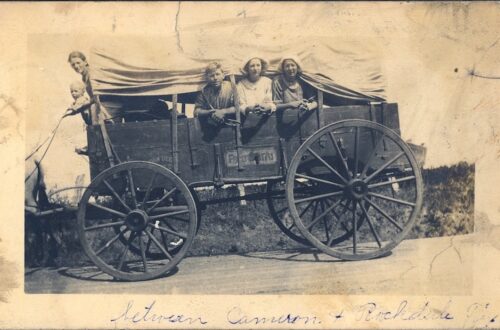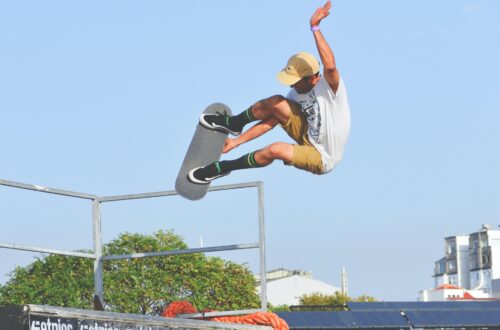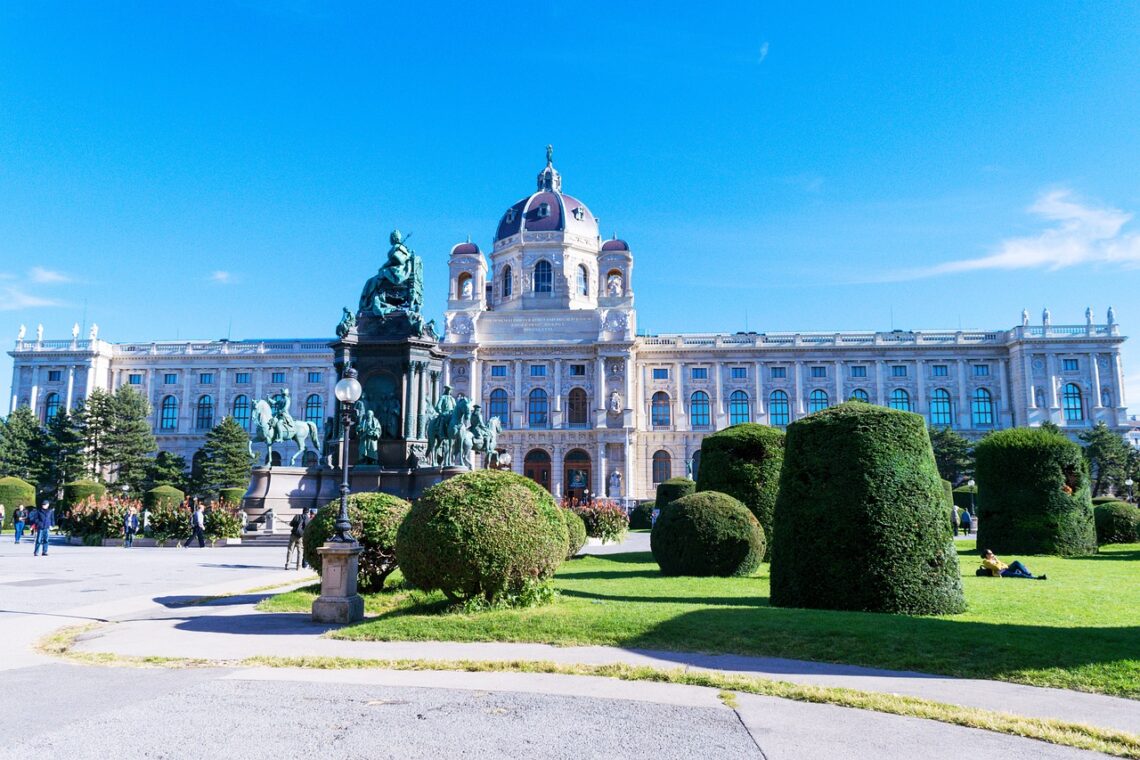
What Are The Top Tourist Attractions In Vienna?
Vienna, the enchanting capital of Austria, boasts a wealth of captivating tourist attractions that are sure to leave you in awe. From impressive historical landmarks to world-renowned museums, this vibrant city effortlessly blends its rich history with a modern twist. Discover the imperial beauty of the magnificent Schönbrunn Palace, get lost in the grandeur of St. Stephen’s Cathedral, or immerse yourself in the artistry of the Belvedere Palace and Museum. Vienna offers a truly magical experience that is guaranteed to make your visit unforgettable.

Schönbrunn Palace
Overview and History of Schönbrunn Palace
Schönbrunn Palace is one of Vienna’s top tourist attractions that you absolutely must visit during your trip to the city. This magnificent palace holds immense historical significance and offers a glimpse into the opulent life of the Austrian royals. It has served as the summer residence of the Habsburg rulers, including Empress Maria Theresa and Emperor Franz Joseph. The palace has been an important cultural and architectural landmark since the 17th century and was even declared a UNESCO World Heritage Site in 1996.
Architecture and Design of Schönbrunn Palace
The architecture and design of Schönbrunn Palace are truly mesmerizing. It showcases a magnificent blend of Baroque and Rococo styles, with its grand façade adorned with statues, frescoes, and lavish ornamentation. As you walk through the opulent halls and rooms, you will be enchanted by the intricate details, gilded ceilings, and stunning chandeliers that reflect the splendor of the Habsburg dynasty. The palace boasts an incredible 1,441 rooms, each with its own unique charm and history.
Touring the Palace and Gardens
When you visit Schönbrunn Palace, it is highly recommended to take a guided tour to fully appreciate the historical significance and beauty of the palace. You will have the opportunity to explore some of the most impressive rooms, including the Great Gallery, the Mirror Room, and the Millions Room, which served as the venue for grand balls and concerts. The tour guides provide fascinating insights into the lives and stories of the palace’s former residents.
After touring the palace, don’t miss the chance to explore the stunning gardens surrounding it. The Schönbrunn Gardens cover an expansive area of 160 acres and feature beautifully manicured lawns, vibrant flower beds, and charming pathways. As you stroll through the garden, you’ll come across various architectural gems such as the Neptune Fountain, the Gloriette, and the Roman Ruins. The panoramic views of Vienna from the top of the garden hill are simply breathtaking and provide a perfect backdrop for memorable photos.
Family Activities at Schönbrunn Palace
Schönbrunn Palace is not only a treat for history buffs and architecture enthusiasts but also offers a wide range of family-friendly activities. Children will love exploring the Palace Maze, which features secret paths and hidden corners that challenge their sense of adventure. Additionally, the Tiergarten Schönbrunn, the world’s oldest operating zoo, is located within the palace grounds and provides a wonderful opportunity for kids to get up close and personal with a variety of fascinating animals. With its captivating history and plethora of activities, Schönbrunn Palace is a must-visit destination for travelers of all ages.
St. Stephen’s Cathedral
History and Significance of St. Stephen’s Cathedral
St. Stephen’s Cathedral, also known as Stephansdom, is another iconic landmark in Vienna that should be at the top of your sightseeing list. This majestic Gothic cathedral is the mother church of the Roman Catholic Archdiocese of Vienna and has played a central role in the city’s religious, cultural, and architectural history. Construction of the cathedral began in the 12th century, and over the centuries, it has undergone various expansions and renovations, resulting in its current awe-inspiring form.
Architectural Features of St. Stephen’s Cathedral
The architectural features of St. Stephen’s Cathedral are simply breathtaking and showcase the awe-inspiring craftsmanship of the medieval builders. The cathedral’s most prominent feature is its towering South Tower, which offers panoramic views of Vienna from its viewing platform. The intricate exterior carvings, including the famous St. George’s Gate and the pulpit by Anton Pilgram, are testaments to the skill and attention to detail of the medieval stonemasons. Inside, the cathedral is adorned with stunning stained glass windows, intricate altars, and the magnificent High Altar, which is a true masterpiece.
Climbing the Tower for a Panoramic View
For the ultimate Vienna experience, be sure to climb the 343 steps of the South Tower to enjoy a breathtaking panoramic view of the city. As you ascend the tower, you will pass the colossal Pummerin bell, one of the largest bells in the world, and be rewarded with stunning vistas of Vienna’s historic center, including nearby landmarks such as the Hofburg Palace and the Vienna State Opera. It’s truly a once-in-a-lifetime opportunity to see Vienna from such a unique perspective.
Attending Mass and Concerts at St. Stephen’s Cathedral
St. Stephen’s Cathedral is not only a sightseeing destination but also an active church where religious services are held regularly. Attending a Mass or a choir performance is a serene and culturally enriching experience that allows you to witness the spiritual significance of the cathedral. Additionally, the cathedral hosts numerous concerts throughout the year, ranging from classical music to choral performances, providing a magical setting for enjoying Vienna’s rich musical heritage.

Belvedere Palace
The Belvedere Complex: Upper and Lower Palaces
The Belvedere Palace is a stunning architectural masterpiece consisting of two magnificent palaces, the Upper and Lower Belvedere. This historical complex was constructed in the 18th century and was intended to serve as a summer residence for Prince Eugene of Savoy. Today, it stands as a testament to the grandeur of the Baroque era and is home to a remarkable collection of artworks.
The Upper Belvedere, with its grand central hall and opulent rooms, houses the Belvedere’s permanent art collection. It is here that you will find Gustav Klimt’s famous masterpiece, “The Kiss,” among other celebrated works of art. The Lower Belvedere, on the other hand, offers a rich display of Baroque architecture and serves as a venue for temporary exhibitions and cultural events. The charming gardens and scenic views connecting the Upper and Lower Belvedere add to the overall splendor of this magnificent palace complex.
Gorgeous Gardens and Fountains
The beautifully landscaped gardens surrounding the Belvedere Palace are a true delight for the senses. The meticulously manicured lawns, vibrant flower beds, and tranquil water features create a serene atmosphere that is perfect for leisurely walks or picnics. The exquisite fountains, such as the Cascade Fountain, provide a soothing backdrop and make for fantastic photo opportunities. The symmetrical layout, terraces, and sculptures transport visitors back in time to the grandeur and elegance of the Baroque period.
Art Collection at the Belvedere
Art enthusiasts will be enthralled by the extensive art collection housed within the Belvedere Palace. The museum showcases a diverse range of artworks, spanning from the Middle Ages to the present day. From Austrian and international artists to the works of the Vienna Secession movement, the collection offers a comprehensive overview of art history. In addition to Gustav Klimt’s iconic “The Kiss,” you will also find other notable pieces by Egon Schiele and Oskar Kokoschka, making the Belvedere a must-visit destination for art lovers.
Visiting the Belvedere as a Film Location
Film enthusiasts may recognize the Belvedere Palace from its appearances in various movies, including “Before Sunrise” and “The third Man.” The palace’s breathtaking architecture, elegant interiors, and luscious gardens have made it a popular choice for filmmakers. Exploring the Belvedere Palace allows you to step into the world of cinema and experience the beauty that has captivated audiences on the silver screen.
Hofburg Palace
Historical Significance of Hofburg Palace
Hofburg Palace is an iconic symbol of Vienna’s imperial history and has been the center of power for the Habsburg dynasty for over 600 years. This sprawling palace complex served as the official residence of the Austrian monarchs, including Empress Maria Theresa and Emperor Franz Joseph. It witnessed the rise and fall of empires, the signing of historic treaties, and the orchestration of political affairs that shaped Europe’s destiny. Today, the palace stands as a testament to the grandeur and elegance of the Habsburg era.
Different Buildings and Areas within Hofburg Palace
Hofburg Palace is vast and encompasses several buildings and wings that are worth exploring. The Imperial Apartments invite you to step into the private quarters of the imperial family, giving you a glimpse into their luxurious lifestyle. The Sisi Museum provides a fascinating insight into the life of Empress Elisabeth (“Sisi”), showcasing her personal belongings and highlighting her contribution to Austrian society. The Silver Collection allows you to marvel at the opulent table settings and exquisite silverware used by the imperial court.
Within the palace complex, you’ll also find the famous Spanish Riding School, where the renowned Lipizzaner horses perform the art of classical dressage. Watching these majestic horses in action is a truly captivating experience and offers a unique connection to Austrian equestrian tradition.
Imperial Apartments and Treasury
The Imperial Apartments at Hofburg Palace are a must-visit for those interested in imperial history and the lives of the Austrian royals. These lavishly furnished rooms provide a glimpse into the exquisite taste and opulence of the imperial family. From the magnificent Mirror Room to the elegant Napoleon Room, each space tells a story and showcases the grandeur of the Habsburg dynasty.
If you’re interested in exploring the treasures of the Habsburgs, the Hofburg Treasury is the place to be. The Treasury houses an extensive collection of crowns, jewels, precious artifacts, and religious relics, including the Imperial Crown of the Holy Roman Empire and the Austrian Crown Jewels. It is a treasure trove of historical artifacts that reflects the wealth and power of the Habsburgs throughout the centuries.
Watching the Lipizzaner Horses Perform at the Spanish Riding School
A visit to the Spanish Riding School is an absolute must for equestrian enthusiasts and those interested in witnessing the art of classical dressage. Established in 1572, it is the oldest riding school in the world and continues the tradition of training Lipizzaner horses to perform intricate movements and maneuvers. The dazzling displays of horsemanship, combined with the elegance and grace of the horses, create a mesmerizing experience that is truly unforgettable. Whether you choose to attend a morning practice or a formal performance, the Spanish Riding School offers a unique and enchanting insight into the equestrian heritage of Austria.
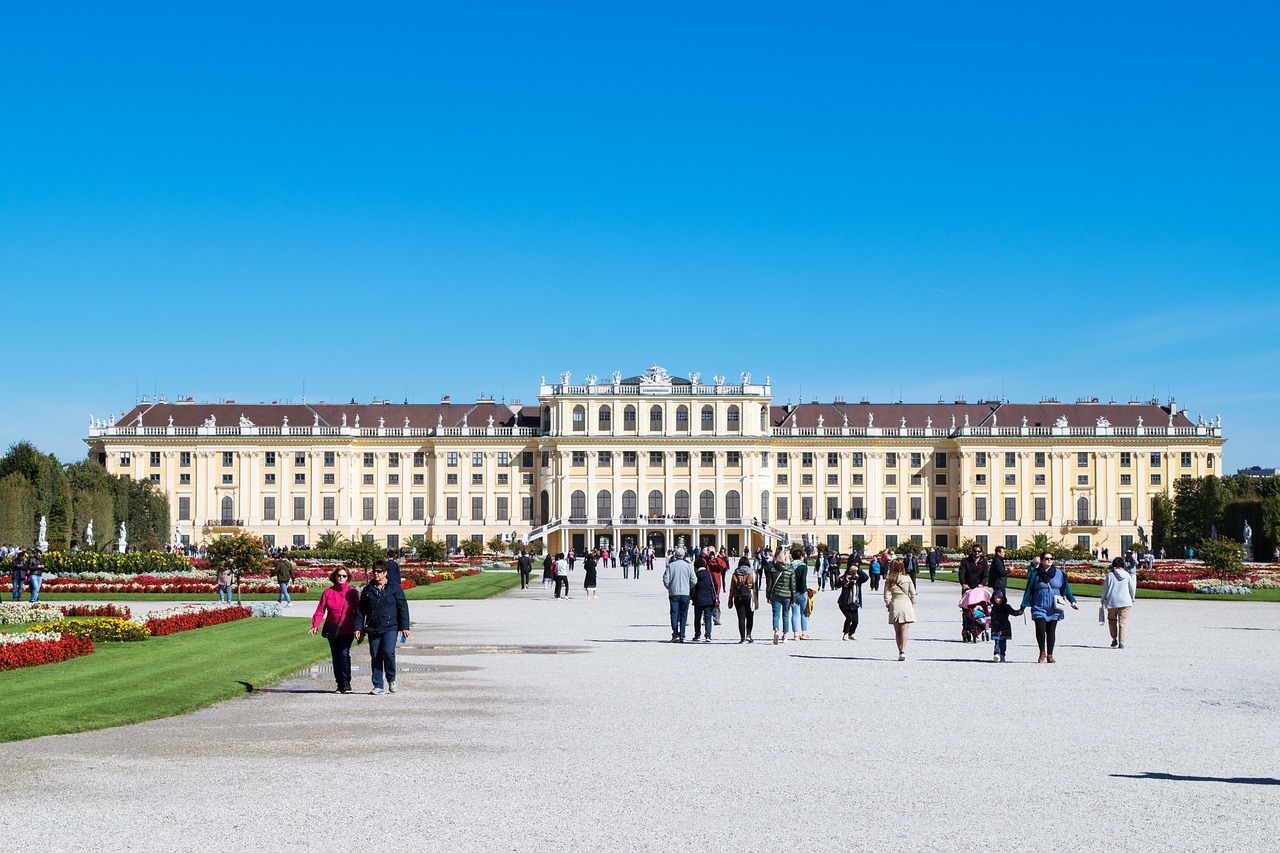
Vienna State Opera
Background and History of the Vienna State Opera
The Vienna State Opera, or Wiener Staatsoper, is one of the most prestigious opera houses in the world and a true gem of Viennese culture. It has a rich and storied history that dates back to the 19th century when it was built to replace the old court opera house. The opera house has witnessed countless legendary performances by celebrated composers, conductors, and singers, cementing its reputation as a global center of operatic excellence. Today, it continues to captivate audiences with its extraordinary productions and traditional Viennese charm.
Architectural Beauty of the Opera House
The Vienna State Opera is not just a platform for magnificent performances but also a stunning architectural masterpiece. Its grand façade, adorned with sculptures and opulent ornamentation, evokes a sense of grandeur and elegance. The interior of the opera house is equally remarkable, featuring lavish decorations, crystal chandeliers, and regal boxes that provide a truly extraordinary setting for opera and ballet performances. The main auditorium, with its plush red velvet seats and richly gilded details, creates a captivating atmosphere that transports audiences to a bygone era of opulence and sophistication.
Attending Opera and Ballet Performances
Attending an opera or ballet performance at the Vienna State Opera is an absolute must for any visitor to Vienna. Whether you are a seasoned opera lover or someone new to the art form, you are sure to be enraptured by the world-class productions on offer. The Vienna State Opera boasts a diverse repertoire, ranging from beloved classics by Mozart, Beethoven, and Verdi to contemporary works that push the boundaries of the art form. The incredible talent of the singers, dancers, and musicians, combined with the acoustics of the opera house, creates a transcendent experience that will leave you spellbound.
Exploring the Backstage and Opera Museum
For those curious about the inner workings of the Vienna State Opera, guided tours offer a behind-the-scenes look at the backstage area, giving you a glimpse into the intricacies of stage production and the effort that goes into creating the magic on stage. You can explore the costume and wig departments, witness rehearsals in progress, and gain insight into the technical aspects of the opera house.
Additionally, the Opera Museum provides a fascinating insight into the history of the opera house and its illustrious past. Here, you can explore interactive exhibits, including displays of original costumes, set designs, and archival materials, which transport you through time and provide a deeper understanding of the Vienna State Opera’s cultural significance.
Prater Park
Introduction to Prater Park
Prater Park is one of Vienna’s most beloved recreational areas and a perfect destination for outdoor enthusiasts and families. This large public park offers a diverse range of activities and attractions, ensuring that there is something for everyone to enjoy. With its expansive green spaces, amusement park rides, and a myriad of entertainment options, Prater Park is a bustling hub of excitement and a favorite destination among both locals and tourists.
Rides and Attractions in Prater Park
One of the most iconic features of Prater Park is the Wurstelprater amusement park, which is home to a variety of thrilling rides and attractions. From roller coasters and carousels to Ferris wheels and bumper cars, the amusement park offers endless fun and excitement for visitors of all ages. The nostalgic atmosphere and vintage charm of the park add an extra layer of delight to the experience, evoking a sense of pure joy and wonder.
Taking a Ride on the Giant Ferris Wheel
No visit to Prater Park would be complete without taking a ride on the Riesenrad, or Giant Ferris Wheel. This colossal Ferris wheel has become an iconic symbol of Vienna and has been a part of the city’s skyline since 1897. As you ascend to the top, you will be rewarded with breathtaking panoramic views of Vienna. The slow rotation of the Ferris wheel allows you to take in the stunning cityscape, including landmarks such as St. Stephen’s Cathedral and the Danube River. Riding the Giant Ferris Wheel is a truly magical experience that offers a unique perspective on the beauty of Vienna.
Visiting Prater at Night
Prater Park has a vibrant atmosphere both during the day and at night. When the sun goes down, the park transforms into a lively entertainment district, with numerous bars, restaurants, and clubs lighting up the night. The Riesenrad and other attractions take on a whole new allure as they illuminate the night sky, creating a romantic and enchanting ambiance. Whether you choose to enjoy a delicious meal, sip cocktails in a trendy bar, or dance the night away, Prater Park offers a vibrant nightlife scene that is sure to leave you with unforgettable memories.
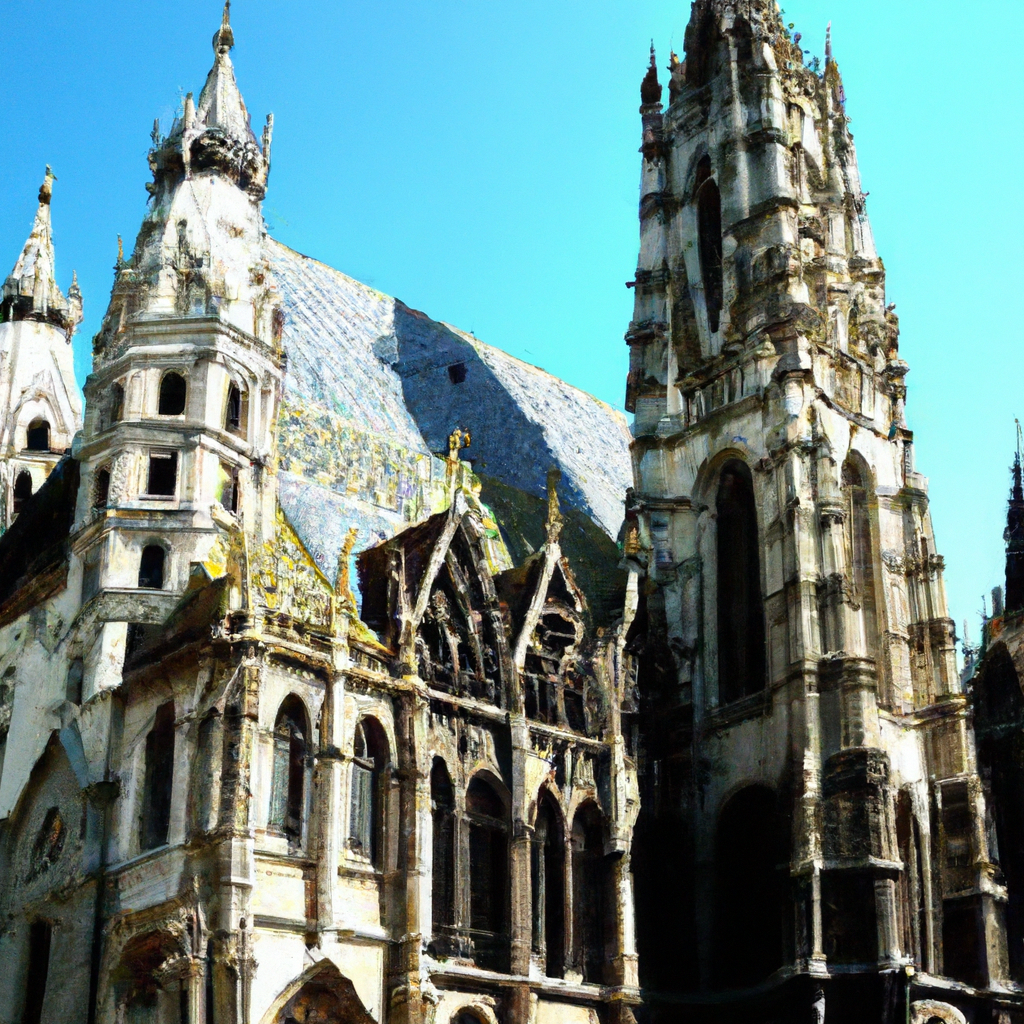
Vienna Museumsquartier
Overview of Vienna Museumsquartier
The Vienna Museumsquartier, often referred to as MQ, is a vibrant cultural hub that showcases the best of Vienna’s contemporary arts and cultural scene. This sprawling complex is one of the world’s largest cultural quarters, situated in the heart of the city. With its unique blend of historical and modern architecture, the Museumsquartier offers a dynamic and engaging environment for both locals and visitors.
Art Museums in the Area
The Vienna Museumsquartier is home to an impressive array of art museums that cater to a wide range of interests. The Leopold Museum is dedicated to modern art, with a particular focus on Austrian artists like Egon Schiele and Gustav Klimt. The MUMOK (Museum of Modern Art) boasts an extensive collection of contemporary art, including works by Andy Warhol and Pablo Picasso. The Kunsthistorisches Museum, adjacent to the Museumsquartier, showcases an extraordinary collection of European art and antiquities. Whether you have a specific interest in contemporary, modern, or classical art, the Museumsquartier has something to offer every art enthusiast.
Exhibition Spaces and Cultural Institutions
The Museumsquartier is not limited to traditional art museums; it is also a breeding ground for creativity and innovation. The complex houses a variety of exhibition spaces, galleries, and cultural institutions that consistently host a diverse range of temporary exhibits and installations. From photography and design exhibitions to interactive multimedia displays, there is always something new and exciting to discover at the Museumsquartier.
Relaxing in the Courtyards and Cafés
One of the highlights of the Museumsquartier is its inviting outdoor courtyards, which serve as gathering spaces for visitors seeking relaxation and socialization. The Museumsquartier courtyards are dotted with cozy cafés and trendy bars, offering a perfect opportunity to sit back, enjoy a cup of Viennese coffee, and soak in the vibrant atmosphere. The courtyard seating areas provide a unique blend of historical charm and modern design, creating a harmonious fusion of the past and present.
Naschmarkt
History and Vibrant Atmosphere of Naschmarkt
Naschmarkt is a bustling open-air market that has been a Viennese institution for centuries. The market enjoys a rich history, dating back to the 16th century, and has remained a vibrant hub of activity ever since. Naschmarkt offers a unique sensory experience, combining a vibrant atmosphere with a diverse range of culinary delights and cultural influences.
Variety of Stalls and Food Vendors
Naschmarkt is a food lover’s paradise, boasting a wide range of stalls and food vendors that showcase the best of Viennese and international cuisine. Fresh produce, aromatic spices, local cheeses, and exotic fruits are just a few of the culinary treasures waiting to be explored. As you wander through the market, you’ll be greeted by the sights, sounds, and tantalizing aromas of various culinary delights. From traditional Viennese dishes like Wiener Schnitzel and Sachertorte to Middle Eastern falafel and Indian curries, Naschmarkt offers an eclectic mix of flavors that cater to every palate.
Sampling Local Delicacies at Naschmarkt
A visit to Naschmarkt is incomplete without sampling some of Vienna’s local delicacies. Be sure to try the famous Viennese sausage, known as the Würstel, which is often served with a side of freshly baked pretzels. For those with a sweet tooth, indulge in a slice of delectable Sachertorte or an apricot-filled Kaiserschmarrn. Additionally, Naschmarkt is famous for its assortment of Mediterranean olives, cheeses, and antipasti, offering a true culinary adventure for food enthusiasts.
Antique Market and Flea Market Finds
In addition to its culinary offerings, Naschmarkt is also home to an antique market and a flea market, creating a treasure trove for collectors and vintage enthusiasts. Here, you can explore a diverse selection of vintage clothing, jewelry, furniture, books, and much more. Whether you are searching for a unique piece of history or simply enjoy browsing through eclectic items, the antique market and flea market at Naschmarkt are worth a visit.
Vienna City Hall
Significance and Architecture of Vienna City Hall
Vienna City Hall, or Rathaus, is an impressive example of neo-Gothic architecture and stands as a symbol of Vienna’s rich history and political importance. This magnificent building serves as the seat of the Mayor and the City Council, representing the heart of Viennese governance. Its intricate façade, featuring spires, statues, and gargoyles, adds a distinct charm to Vienna’s architectural landscape. Vienna City Hall is a true architectural masterpiece that evokes a sense of grandeur and authority.
Exploring the Public Spaces and Gardens
While Vienna City Hall is primarily a governmental building, it also offers various public spaces and gardens that are open for visitors to enjoy. The Rathausplatz, the square in front of the city hall, hosts numerous events and festivals throughout the year, including the famous Vienna Christmas Market. The square is the perfect spot to relax on a park bench, take in the scenery, and absorb the vibrant atmosphere of Vienna. In addition, the City Hall Park, with its beautifully manicured lawns, flower beds, and tranquil fountains, provides a peaceful oasis in the heart of the city, inviting visitors to escape the bustling urban environment.
Attending Events and Festivals at Vienna City Hall
Vienna City Hall is not only a center for governance but also a prominent venue for cultural events and festivals. The building’s grand halls and majestic interiors provide a stunning backdrop for concerts, balls, exhibitions, and other cultural happenings. Whether it is the Viennese Film Festival, classical music performances, or themed balls, Vienna City Hall serves as a hub of cultural celebration, bringing together locals and tourists to revel in the vibrant atmosphere of the city.
Guided Tours and City Hall Tower Ascend
To gain a deeper understanding of the history and architecture of Vienna City Hall, guided tours are available to the public. These tours provide fascinating insights into the inner workings of the city’s government, the historical significance of the building, and the artistic and architectural details that make Vienna City Hall a true gem. As part of the tour, visitors have the opportunity to ascend the City Hall Tower, where breathtaking views of Vienna’s skyline are waiting to be admired. The panoramic vistas stretch from the historic old town to the modern skyscrapers, offering a unique perspective on the city’s ever-evolving landscape.
Albertina Museum and Art Gallery
Collections and Exhibitions at the Albertina
The Albertina Museum and Art Gallery is a cultural gem that houses an extensive collection of artworks spanning various periods and styles. Located in the heart of Vienna, this prestigious institution offers a comprehensive survey of art history, from Old Masters to modern and contemporary art. The Albertina collection includes masterpieces by renowned artists such as Leonardo da Vinci, Albrecht Dürer, Raphael, and Claude Monet, providing a rich and diverse art experience for visitors.
Masterpieces and Famous Artists
The Albertina Museum and Art Gallery is home to an impressive collection of masterpieces that will surely captivate any art enthusiast. The museum holds a significant number of works by Albrecht Dürer, including his famous “Young Hare” and “Feast of the Rose Garlands.” The graphic arts collection is equally remarkable, with an extensive assortment of prints and drawings by artists such as Rembrandt, Goya, and Picasso. The Albertina offers a unique opportunity to witness the skill and artistry of some of the world’s most celebrated artists.
Architectural Highlights of the Albertina
The Albertina Museum itself is an architectural masterpiece, seamlessly blending historical and modern elements. The Habsburg-era Palais Albertina serves as the backdrop for the museum and provides a glimpse into Vienna’s imperial past. The museum’s extension, the Albertina Modern, features a striking glass facade that contrasts with the traditional architecture, creating an intriguing juxtaposition of old and new. The interior of the Albertina is equally impressive, with its spacious exhibition halls, elegant rotunda, and inviting galleries that provide an immersive and engaging art experience.
Visiting the State Rooms and Café
For those seeking the complete Albertina experience, a visit to the State Rooms is highly recommended. These beautifully adorned rooms were once the private quarters of the Habsburg Archduke. Here, you can admire the intricate details of the stucco ceilings, stunning chandeliers, and period furniture that transport you back in time to the Habsburg era. Additionally, the museum’s café offers a delightful setting to relax and appreciate the Viennese coffeehouse culture. Enjoy a cup of coffee and a slice of cake as you bask in the elegant ambiance of one of Vienna’s most cherished institutions.


